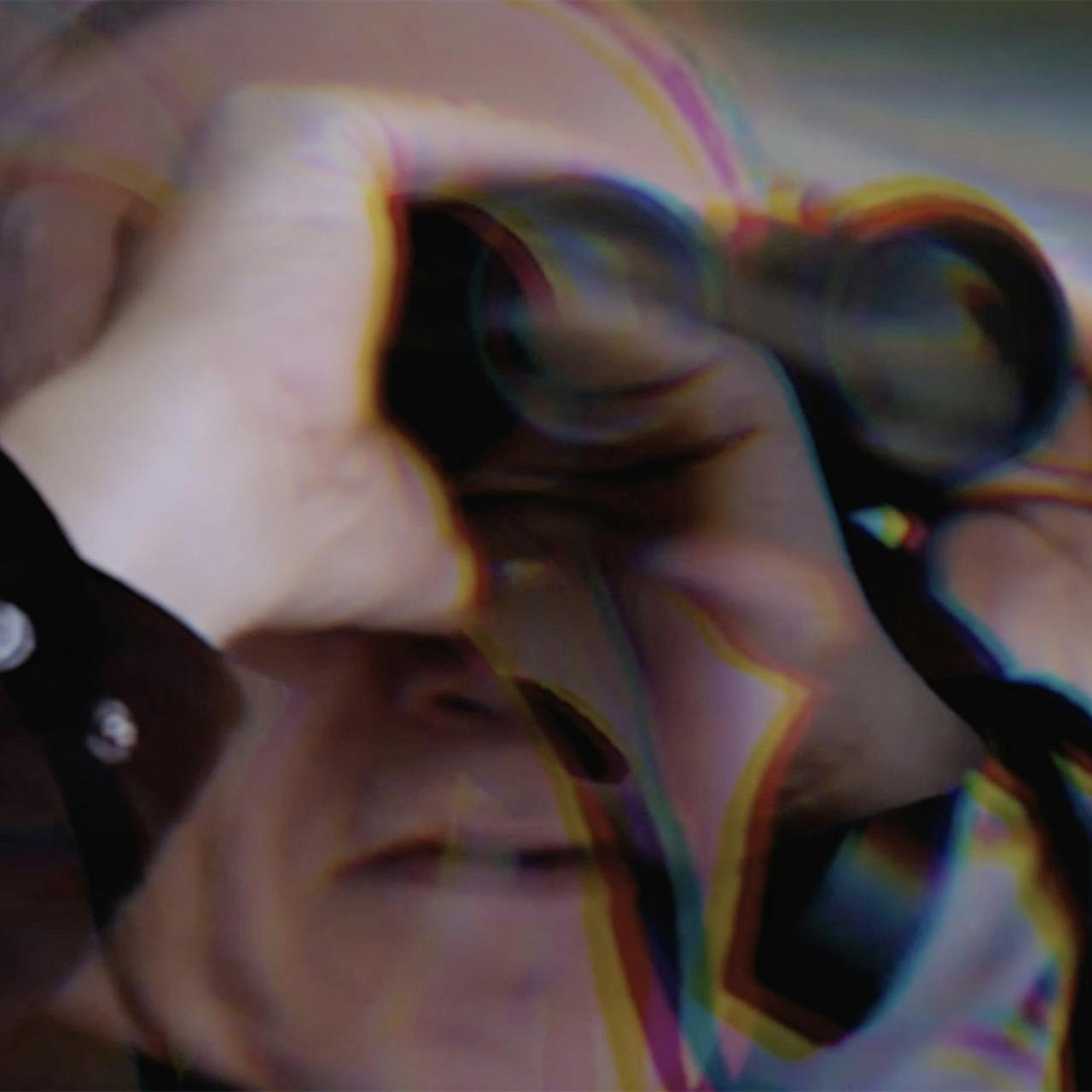Eyes of the Nation


Nicholas Korody
Binoculars’ stereoscopic vision is what gives their seeing depth, its double vision mirroring our two eyes. This though is the inverse of what media represents them as when it pastes up two interlocking circles, single-stream, as a mask to signal first-person vision. They’re images of seeing that flatten over the seeing mind’s semi-illusory depth. In Eyes of the Nation, writer and designer Nicholas Korody of the research-based design practice Interior Agency demonstrates the work of vision and obscurity in the project of Israeli state-making.
Images of PMs and officials looking through binoculars proliferate in Israeli media. The Golan Heights, occupied by Israel since the 1967 Six-Day War, is often the surveilled subject, existing to many just as image. How flat things are, even on, Mt. Hermon with the UN’s highest installation at over 9,200-foot elevation and the only ski resort in Israeli occupied territory. The Golan Heights is in part militarily strategic by virtue of the wide range of sight it affords, the occupied land exists too, strategically, as a visioning, an image-product of the Israeli state apparatus for public consumption. But when you paint a self-portrait as Israel does through its media images, you can’t see the mirror and the canvas at once; the self-portrait is a kind of blindness. In the statist regime of seeing, we see PMs and officials looking through binoculars, sometimes with caps on. What or even if they see doesn’t matter. It matters that we can see their seeing. As the false-seeing official acts as metonym for the state by these photos we are reminded of the state’s authority on vision, on vision as authority. Satellites and drones and soldiers perched upon the Heights see far and wide while the propagandized see only what is meant to be shown; those blindfolded or even blinded by the IDF and other security forces see not at all.
The right to vision is a self-given one, a form of power that leads to Israeli surveillance tools being referred to as “The Eyes of the Nation,” a name which suggests not only Israel seeing in the abstract, reifying its right to surveil, but also which gives the sense that each person who belongs to that state has a claim to the prosthetic sight that so defines Israeli occupying military power. To uphold the coherence of the state and its perceived right on the part of its population to so-called self-defense, seeing is routed into an affective tool, one that generates pride and patriotism and fear and hatred. It makes warzones into screens, even IRL as for many they can only be understood through the idea of images—such as when battles in Syria visible on high were described by tourists as being like a “real-life western.” It turns the landscape into image, reinforcing the right to circumscribe and control that land as given. The seeing of Syria, itself cleaved by the annexed Golan Heights, shows what is not Syria, namely Israel—the site of seeing. A state is defined by borders that are necessarily defined by violence and these images of seeing serve as justification to that violence by abstracting it, two-dimensionalizing it. A staged claim to scopic power, these images of seeing circulating endlessly are produced to obscure the reality beyond their frames.
